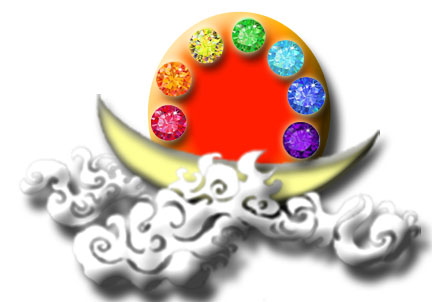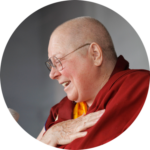A student recently asked me about Erroneous View #24-“Acknowledging that one may postpone learning from Buddha until one is less busy with worldly matters,” while other students have asked about how to maintain their practice while doing their daily worldly activity. I found those questions both related to Erroneous View #3-“Acknowledging that forming mudras and chanting mantras is doing a dharma practice.”
The answer to what is Dharma practice is no, it is not just mudras and mantras, although that may be the first part of your practice and you may learn a practice in stages. Your master or your yidam may teach you more complex rituals as you progress with any dharma practice. We have learned other correct views and know we need to practice our meditation, cultivate ourselves, practice the six paramitas and bodhicitta and learn how to have our actions, speech, and thoughts become like that of the Buddhas. The second question concerning postponing doing your practice or “learning from Buddha” is related in that you carry your practice with you in all that you do. How you do your worldly matters can also be your practice. You do not need to postpone starting such practices until you are free from worldly commitments. In fact, you must not wait.
The Buddha Master elaborates on this principle in His bilingual discourse entitled Many People Have Deceived Themselves, Yet They Do Not Know: “For those of you who chant mantras, you could chant this mantra or that mantra. Regardless of how you chant, if you go against the Buddhist teachings and rules in your observance of the precept, you likewise will not reap any beneficial effects. It is the same thing based on the same truth. When you are meditating, regardless of what method you use to meditate—be that Mahayana or Hinayana, counting your breaths or vipassana, observing your chakra openings or observing emptiness, counting thoughts or whatever method of practice—if your conduct is not in accord with the precepts and rules, if you do not genuinely have the mind of greatly compassionate bodhicitta, it is likewise impossible for you to receive any beneficial effects.”
“Erroneous View No. 3: Acknowledging that forming mudras and chanting mantras is doing a dharma practice. Some people apply mudras and chant mantras and think that they are doing their dharma practice. This is wrong. That is not doing a dharma practice. In addition to mudras and mantras, a dharma practice includes dharma instruments, visualization, direction and time, and all of the rituals stated in the dharma manual.“
Your dharma practice is much more inclusive–it includes what you do in your formal sitting practice “on your cushion” and what you do every moment of your day and night. It is your cultivation that you take with you into the world and do on your cushion. Everything you do can be your dharma practice. You follow what the Buddha Master taught us in Learning from Buddha to reflect on how well you are following the Dharma when you wake up, mid-day, and before you retire. Check your homework from your “Refuge Certificate” and the ironclad stipulations of the “Definitive Tenets Imparted by Buddha” so that everything you “undertake must be based upon a foundation of great compassion.“
“Erroneous View #24: Acknowledging that one may postpone learning from Buddha until one is less busy with worldly matters: Some people think, “I am so busy now. I will wait until I finish the work I am doing before I learn Buddhism,” or “I will wait until my business is well developed before I learn Buddhism,” or “I will wait until I am a little older and retire before I learn Buddhism.” As soon as you think like that, you immediately plant the seed of degeneration. That seed was planted right at the moment you generated such a view. Learning Buddhism has to start right away. Correct thinking has to be established right away. You should start right now at this moment while I am giving this discourse. Because there is no fixed date when a person dies, you do not know on which day you will die.
CLICK to read, understand, and practice the definitive tenets imparted by the Buddha.
CLICK for article on requesting a revised Refuge Certificate.
Much of this article was originally posted February 10, 2019 as part of a series of classes on the 128 Evil and Erroneous Views from the Supreme and Unsurpassable Mahamudra of Liberation..



Add comment